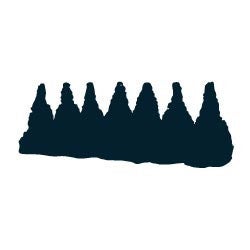Ursula von Rydingsvard For Younger Children

Untitled (Seven Mountains)
Ursula von Rydingsvard
Subject: Shapes found in nature
Activity: Making a sculpture from wood
Materials: Popsicle sticks, tongue depressors, wooden chopsticks, scissors, and glue
Vocabulary: Organic, geometric, sculptor, carve
Ursula von Rydingsvard is a sculptor who works in wood. Her father was a woodcutter. In her sculptures, she builds a large cube of wood by stacking and gluing wooden beams together. Using hand tools, von Rydingsvard then carves into the cube to create another shape. She uses natural materials like wood to recreate shapes and forms found in nature like mountains. Von Rydingsvard uses a simple form (square wooden beams) to create more complex forms (the triangle or pyramid) and then an even more complex arrangement (a row or range of pyramids). She enjoys working in an expressive style and believes viewers should have their own personal responses to works of art.
How are these Seven Mountains different than mountains we find in nature?
How would a manmade mountain differ from a natural one?
What else does this row of triangles look like?
What are some other shapes that are commonly found in nature?
Help your child to cut popsicle sticks, tongue depressors, and/or wooden chopsticks into different lengths. Experiment with stacking the shapes to create different forms. Encourage your child to make a square, triangle, or circle out of the different lengths of wood. Use glue to adhere them together.
Organic —Looking like shapes found in nature
Geometric —Using simple shapes and elements such as lines, circles, squares, and triangles
Sculptor —An artist who makes works of art that have height, width, and depth
Carve—To cut away from a surface
